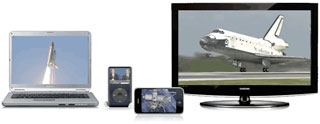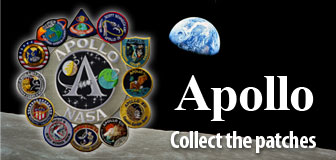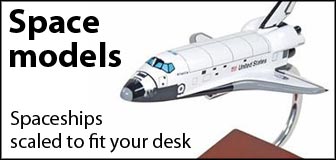Boeing's capsule landing system tested in Nevada
BY STEPHEN CLARK
SPACEFLIGHT NOW
Posted: May 3, 2012
Boeing conducted a successful end-to-end test Wednesday of the landing parachutes for the CST-100 commercial crew spacecraft, the second drop test of the boilerplate capsule in a month.
An Erickson Sky Crane helicopter hoisted the capsule to an altitude of about 14,000 feet and released it, according to a Boeing press release.
Wednesday's drop test included two drogue stabilization parachutes and three main chutes to slow the capsule to a gentle touchdown at Delamar Dry Lake near Alamo, Nev., a former emergency landing site for the X-15 rocket plane. Crewed flights of the CST-100 will initially return to Earth at White Sands Missile Range, N.M.
The parachutes all deployed smoothly on a timing sequence, and six airbags inflated before landing to cushion the impact of touchdown, according to Boeing.
A drop test of the same capsule April 3 only used the CST-100's three main parachutes.
"This second parachute drop test validates Boeing's innovative system architecture and deployment plan," said John Mulholland, vice president and program manager of Boeing commercial programs. "Boeing's completion of this milestone reaffirms our commitment to provide safe, reliable and affordable crewed access to space."
The CST-100 is Boeing's proposed spacecraft for commercial human transportation to the International Space Station. NASA awarded Boeing a $112.9 million agreement last year to advance the design and development of the capsule's systems.
It is competing with spacecraft concepts by SpaceX, Sierra Nevada Corp., and Blue Origin.
Bigelow Aerospace, a Las Vegas-based firm designing a private space station, is partnering with Boeing on the CST-100 vehicle. Bigelow Aerospace built the test article used for the drop tests.
HDT Airborne Systems provides the CST-100's parachutes, and ILC Dover is the contractor for the craft's landing airbags.
Through the end of July, Boeing plans a series of landing airbag tests, a forward heat shield jettison test, and a ground firing of the CST-100's orbital maneuvering and attitude control engine.
The tests will wrap up work under Boeing's current agreement with NASA, but the company is competing for another round of government funding to be awarded by August.
Learn about the next steps in Boeing's CST-100 development program in our story from early April.
Photo credit: Boeing



|
|







